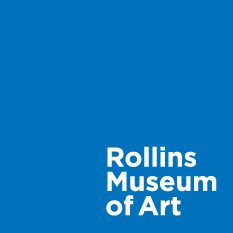Enjoy Spring Fling, a FREE day of family fun at Rollins Museum of Art! With indoor and outdoor arts activities, […]
Integrating the Rollins Museum of Art Collection into the Classroom: New Approaches for Social Emotional Learning in Art Education
Dr. Anne C. Grey helps students Ayelin and Aliviah, Grade K with their art technique. Photo: John P. Burke
360 Degree Virtual Views of Rollins Museum of Art Exhibitions Now Available in one Place
As a teaching museum, our goal is to educate by engaging people with works of art. In Fall 2020, Rollins […]
The Winter 2025 Season at Rollins Museum of Art Has Something for Everyone and Admission is Free
Join us January 18-May 11, 2025 for the Rollins Museum of Art Winter 2025 Season. Enjoy FREE ADMISSION all season […]
Rollins Museum of Art Acquires a Significant Early 20th century painting by Artist Roger Fry
The Rollins Museum of Art owns a collection of superb examples of works by members of the Bloomsbury Group, a […]
Fall Fling: Free Family Day at Rollins Museum of Art
Enjoy Fall Fling, a FREE day of family fun at Rollins Museum of Art! With indoor and outdoor arts activities, […]
Rollins Museum of Art Takes Next Big Step to Becoming a Bilingual Museum/ Museo de Arte Rollins da el siguiente gran paso para convertirse en un museo bilingüe
A few months ago, I read this comment from a visitor who experienced our Spanish language program Arte y Café […]
Artist Samuel Aye-Gboyin, Pathways 2024: Carlos Malamud Prize Finalist
Samuel Aye-Gboyin is one of only six finalists chosen to have works on view in both the UCF Art Gallery […]
The Secret, Alachua, FL by Photographer Michael Bühler-Rose
How The Secret, Alachua, FL by photographer Michael Bühler-Rose helps expand our sense of what cultural exchange might mean.
Join Rollins Museum of Art for FREE family fun at Spring Fling
Enjoy Spring Fling, a FREE day of family fun at Rollins Museum of Art! With indoor and outdoor arts activities, […]
Seven Questions with Elena Vaamonde Work-Study Student at Rollins Museum of Art
As an academic museum, we know how essential hands-on experience is for developing the skills necessary for a successful career. […]
Beyond Our Walls: 8 Ways to Engage With Rollins Museum of Art Even When the Museum is Closed
In person and online offerings beyond the walls of The Rollins Museum of Art
Works by American Photographer Carrie Mae Weems in the Rollins Museum of Art Collection
Gain insights into the works of American Photographer Carrie Mae Weems that are featured in the permanent collection at The Rollins Museum of Art.
Carmen Herrera’s quest for formal simplicity
Carmen Herrera has been described as a “quiet warrior of her art” in her uncompromising commitment to abstraction over decades […]
Work of the Week: Elihu Vedder’s “Superest Invictus Amor”
Elihu Vedder (American, 1836-1923), Superest Invictus Amor (Love Ever Present), 1887, Oil on canvas, 34 ¾ x 12 ¼ inches […]
